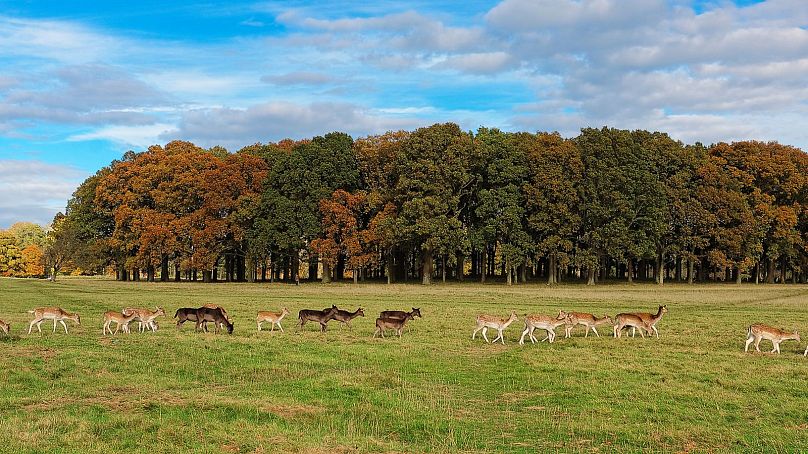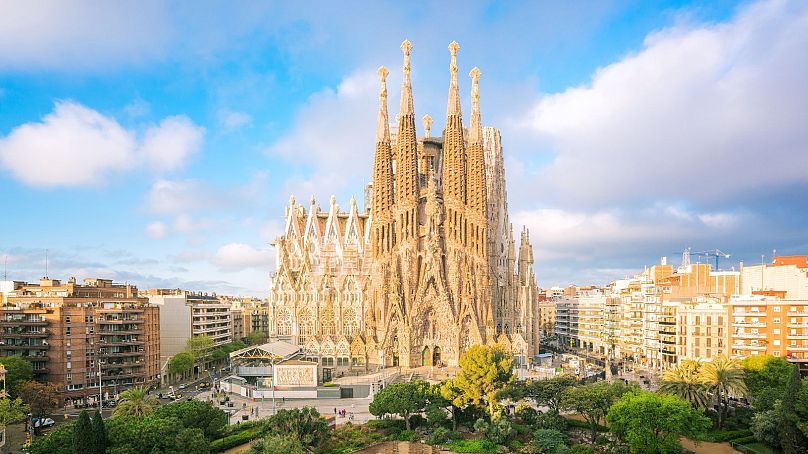Living near green spaces has an array of health benefits, but access is unequal across Europe. How can we make the continent greener?
Keeping cool has been a struggle for those caught in one of Europe’s record-breaking heatwaves this summer.
While urgent action is needed to combat climate change, there’s also an easy-to-implement tool already at hand: green spaces.
Research shows that urban trees can lower temperatures between 2C to 10C depending on local conditions.
And the good news is that over eight in ten Europeans say green spaces and nature are easy to access, according to a new Eurobarometer poll.
But there are clear disparities across the continent.
In Denmark, 100 per cent of people said they could easily access them, whereas in Malta only 51 per cent say they could and 77 per cent say they can in Portugal. So what can we do to make the continent greener?
Can green spaces improve your mental health?
One way to promote green spaces is by highlighting the positives, according to Matilda van den Bosch, a senior researcher at the Barcelona Institute for Global Health.
She wants to make people understand the benefits so they will be open to changes in their cities.
“We know that it doesn't work to give one-sided, top-down information saying ‘ok, this is good for you’, if people don't perceive it that way,” she says.
And there are plenty of advantages to share.
Aside from their cooling effects, green spaces are linked to increased happiness, better mental health, increased social interactions and lower risk of cardiovascular disease.
How can we create more green spaces in Europe?
It’s not as simple as planting some new trees and hoping for the best, however.
“You need a really strong planning approach that actually takes green as an integral part of city planning,” says Professor Cecil Konijnendijk, director of Nature Based Solutions.
He developed the 3-30-300 rule as a guideline for green planning.
The first part means that everyone should be able to see at least three trees from their home.
Next, there should be 30 per cent tree canopy cover at a neighbourhood level. Research says this is the threshold above which we see climate and health benefits.
The final rule is based on the World Health Organisation's recommendation that nobody should live more than 300 metres from a park or green space of at least one hectare.
How did Barcelona become a green haven?
Some European cities have been taking these recommendations to heart.
A clear example of this is the Superilla (Superblocks) project in Barcelona.
Since 2016 the city has been closing off streets to cars and creating new parks at intersections.
“I lived in Barcelona for the previous two and a half years, and my street, for example, just got dug up and the cars were taken out and trees were put in. So it is really happening and it's very radical,” says Konijnendijk.
Perhaps unsurprisingly the project was met with strong opposition. Some were worried about the impact on businesses and others have complained about gentrification.
As certain areas become greener they also become more popular, raising house prices which can push out people on lower incomes.
Van den Bosch says this is a valid concern for those that live in the areas being greened.
“We need to think in terms of real green infrastructure, where you distribute it across the city,” she explains.
Konijnendijk agrees: “We have to make sure that the whole city is green rather than just a few spots where house prices are driven up.”
Where in Europe has the most green spaces?
Across Europe, there are also inequalities in the distrubition of green space.
Access to green spaces tends to be higher in cities in northern countries than in cities in southern and eastern countries.
For example, more than 80 per cent of the population of Stockholm has access to a public park a short walk away, but in Heraklion, Greece less than 20 per cent do.
This could be partly down to historic and cultural reasons. Densely populated mediterranean cities are the oldest in Europe and their centres developed with little to no systematic planning.
In Eastern Europe, the lack of green space is also down to planning.
“It has been less controlled, there's been less focus on green,” says Konijnendijk.
“Often the thinking is there's so much green space around the city so we can build inside and people can go out,” he adds.
Van den Bosch argues for a paradigm shift.
“Urban planners are used to planning for cars rather than people, and seeing the world as it's developing today, it's simply not going to hold.”













